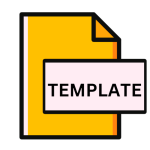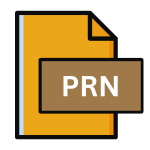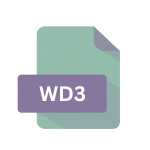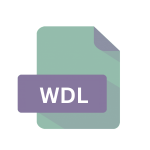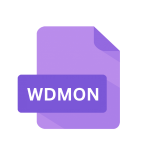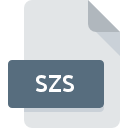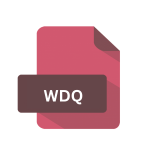.HCR File Extension
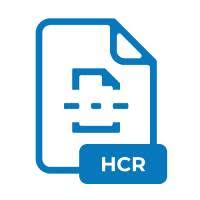
Half-Fold Card File
| Developer | Broderbund |
| Popularity | |
| Category | Page Layout Files |
| Format | .HCR |
| Cross Platform | Update Soon |
What is an HCR file?
.HCR files encapsulate a specialized form of digital content, designed to emulate the traditional half-fold cards used for various purposes, including invitations, greeting cards, and informational pamphlets.
These files integrate text, graphics, and layout formatting to create visually appealing and functional digital representations of physical half-fold cards.
More Information.
.HCR files emerged in tandem with the proliferation of desktop publishing software in the late 20th century.
As users sought to leverage the capabilities of digital design tools for creating diverse forms of content, including cards and brochures, developers recognized the need for a standardized file format optimized for these specific purposes.
Thus, the Half-Fold Card File format was born, offering a convenient means of storing and sharing digital representations of half-fold cards.
The initial purpose of .HCR files were to streamline the creation, distribution, and reproduction of half-fold card designs in the digital realm.
By encapsulating layout information, graphics, and textual content within a single file, .HCR files facilitated seamless collaboration among designers and enabled users to produce high-quality printed materials with minimal effort.
Origin Of This File.
The genesis of the .HCR file format can be traced back to the evolution of digital design and desktop publishing software.
As computer technology advanced, there emerged a need to translate physical documents into digital equivalents while preserving their visual integrity and usability.
The Half-Fold Card File format emerged as a solution to this challenge, providing a structured framework for organizing content in a format familiar to users of traditional print media.
File Structure Technical Specification.
.HCR files adhere to a structured format optimized for storing layout and content information relevant to half-fold cards.
While specific technical specifications may vary depending on the software used to create and manipulate .HCR files, common elements typically include:
- Layout Metadata: Information regarding the dimensions, orientation, and folding configuration of the half-fold card.
- Text Content: The textual elements comprising the card, including headings, body text, and any additional annotations.
- Graphics & Images: Visual assets incorporated into the card design, such as photographs, illustrations, and decorative elements.
- Formatting Instructions: Stylistic attributes applied to text and graphics, including font styles, colors, borders, and alignment.
- Interactive Elements: Optional features enabling interactivity within digital half-fold cards, such as hyperlinks, buttons, and multimedia content.
The technical specifications governing .HCR files may vary across different software applications and versions. However, adherence to industry standards ensures compatibility and interoperability among diverse digital design tools.
How to Convert the File?
Converting .HCR files to alternative formats or vice versa typically involve utilizing specialized conversion tools or exporting/importing functionality within compatible software applications. Common conversion methods include:
- Export to PDF: Many design applications offer the option to export .HCR files to the universally supported PDF format, preserving layout and formatting for printing and digital distribution.
- Import/Export to Graphic Formats: Users can extract individual elements from .HCR files and save them in common graphic formats such as JPEG or PNG for use in other projects.
- Conversion Software: Third-party conversion utilities may facilitate the conversion of .HCR files to alternative formats or vice versa, offering flexibility and convenience for users.
Advantages And Disadvantages.
Advantages:
- Visual Fidelity: .HCR files faithfully replicate the appearance of physical half-fold cards, preserving layout, graphics, and formatting details.
- Ease of Distribution: By encapsulating content within a single file, .HCR files simplify the sharing and distribution of half-fold card designs via email, file-sharing platforms, or physical media.
- Editability: Users can modify and customize .HCR files using compatible design software, enabling iterative refinement of card designs.
- Compactness: .HCR files typically occupy minimal storage space, making them suitable for archiving and sharing large collections of half-fold card designs.
Disadvantages:
- Software Dependency: Accessing and editing .HCR files require compatible design software, limiting accessibility for users without access to specialized applications.
- Compatibility Issues: Variations in .HCR file specifications across software platforms may lead to compatibility issues when transferring files between different applications.
- Limited Interactivity: While .HCR files support basic interactive elements, their functionality may be constrained compared to other digital formats optimized for interactivity.
- Print Quality: Depending on the resolution of embedded graphics and the capabilities of the printing hardware, the print quality of .HCR files may vary.
How to Open HCR?
Open In Windows
- Users can open .HCR files using design software such as Adobe InDesign, CorelDRAW, or Microsoft Publisher, all of which support the format on the Windows platform.
Open In Linux
- While fewer design applications are available for Linux compared to other operating systems, users can explore compatibility options using virtualization or compatibility layers.
Open In MAC
- Design applications like Adobe InDesign and Affinity Publisher offer native support for .HCR files on macOS, allowing users to open and edit them seamlessly.
